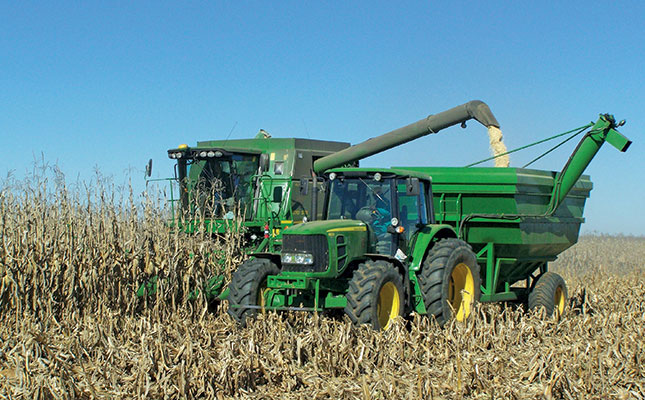
According to a Statistics South Africa (Stats SA) report, the contributions to the performance of the economy were evenly spread between industries on the production side of the economy. The contributions ranged from -0,3 of a percentage point to 0,1 of a percentage point.
On the production (supply) side of the economy, five of the 10 sectors reported weaker results, with agriculture, manufacturing and construction dragging down overall growth.
According to Stats SA, the agriculture industry saw a decline of 9,6%, primarily influenced by decreases in field crops, animal products and horticulture products, contributing -0,3 of a percentage point to the negative GDP growth. The sector faced various challenges in the third quarter, such as the avian influenza outbreak and floods in the Western Cape.
Chief economist of Agbiz, Wandile Sihlobo, said he was surprised by the agricultural decline.
“I thought the ample field crop, the harvest of which was a month behind the typical schedule, would still be reflected in the third-quarter data. For example, the 2022/23 maize harvest is at 16,4 million tons, which is 6% higher than the 2021/22 season’s harvest and the second-largest harvest on record. The soya bean harvest is at a record 2,8 million tons. South Africa’s sugar cane crop is forecast to be 18,5 million tons in 2023/24, up 3% year-on-year. Other field crops and fruit harvests were also decent this year,” Sihlobo said.
However, he said ultimately the base effects and headwinds in the livestock and poultry industry weighed on the sector.
“The livestock and poultry industry, which accounts for nearly half of the sector’s value, has been hit by diseases such as foot-and-mouth, bird flu, and African swine fever. There are weaknesses in the country’s biosecurity system, including the measures in place to reduce the risk of infectious diseases being transmitted to crops, livestock and poultry.”
Sihlobo said also worth noting was that South Africa’s agricultural quarterly gross value-added figures tended to be volatile.
“Hence our communication always focuses on the annual performance. Importantly, with the downbeat growth figures of the recent quarters, I now think the sector could show mild contraction this year instead of the solid growth we initially anticipated. Aside from the quarterly growth figures, the sector also has a deepening downbeat mood, which could undermine investment and long-term growth prospects,” Sihlobo said.
Paul Makube, senior agricultural economist at FNB, echoed Sihlobo’s sentiments, saying despite some of the earlier indicators pointing to a potential upswing in the third quarter agriculture GDP, the sector surprised on the downside with a sharp contraction.
“This was underpinned by a slowdown in economic activity for field crops, animal products, and horticulture products. The bulk of the bumper harvest of the 2023 summer crops happened in Q3, but the downbeat prices offset what could have been an excellent quarter.
“On livestock products, we have seen a negative price growth for beef and pork, with poultry mostly flat, while overall livestock slaughter fell by 8% relative to the previous quarter. The livestock subsector also grappled with disease outbreaks such as avian influenza in the poultry industry by mid-Q3, and given its sheer size of 42% of total agricultural gross producer value, any decline in this subsector activity makes a huge dent on overall agriculture growth.”
Makube said agricultural exports had an impressive performance, with the value of export earnings increasing by 4% year-on-year to $3,9 billion (about R72 billion).
“Maize continued to enjoy strong growth in exports, with an impressive 8,5% year-on-year surge in volumes exported at 1,64 million tons in Q3, dominated by yellow maize (81%), followed by white maize (19%), according to South African Grain Information Services data.
“Nonetheless, we still hold a positive view on the long-term prospects for the agriculture sector on the back of the renewed impetus to open export markets following the conclusion of deals for the export of avocados to China and the reopening of the Saudi Arabian market for South African meat.”
Makube added that the seasonal outlook had improved significantly as the El Niño scare seemed to have dissipated, with rain forecast into mid-December boding well for agriculture.











